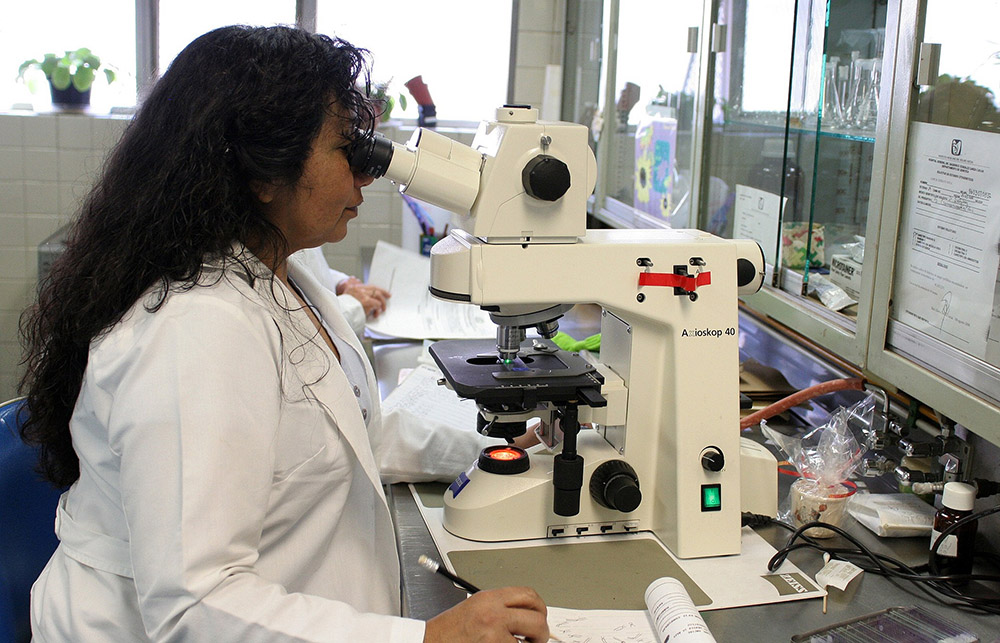An international team of researchers has discovered a new genetic mutation that causes childhood glaucoma, as well as a new mechanism for the disease’s underlying cause. They hope that their findings will lead to better screening for families affected by this deadly condition, as well as new treatments one day.
WHAT
An international team of researchers led by Mass Eye and Ear, a member of Mass General Brigham and Boston Children’s Hospital, has discovered a new genetic mutation that could be the root cause of severe cases of childhood glaucoma, a devastating condition that runs in families and can rob children of their vision by the age of three.
The researchers discovered a mutation in the thrombospondin-1 (THBS1) gene in three ethnically and geographically diverse families with a history of childhood glaucoma using advanced genome-sequencing technology. The researchers then confirmed their findings in a mouse model that had the genetic mutation and developed glaucoma symptoms due to a previously unknown disease mechanism.
WHY
Childhood glaucoma, also known as congenital glaucoma, is a rare but serious disease that can appear in children as young as birth or as old as three years old. Despite its rarity, childhood glaucoma accounts for 5% of all cases of child blindness worldwide.
According to the study’s authors, the new findings, published December 1 in the Journal of Clinical Investigation, could lead to improved screening for childhood glaucoma and earlier and more targeted treatments to prevent vision loss in children with the mutation.
“This is a very exciting finding for families affected by childhood glaucoma,” said Janey L. Wiggs, MD, PhD, Associate Chief of Ophthalmology Clinical Research at Mass Eye and Ear and the Vice Chair for Ophthalmology Clinical Research and Paul Austin Chandler Professor of Ophthalmology at Harvard Medical School. “With this new knowledge, we can offer genetic testing to identify children in a family who may be at risk for the disease and start disease surveillance and conventional treatments earlier to preserve their vision. In the future, we would look to develop new therapies to target this genetic mutation.”
HOW
According to the researchers, the new study has important clinical implications. While more research is needed before comprehensive genetic testing can be provided, every gene discovered provides another opportunity to identify causative mutations in these families through screening, according to the authors.
Knowing about this gene mutation can lead to earlier treatment with conventional therapies.
If a baby is born with this mutation, for example, an eye care specialist can better inform the parents about the risks and develop an appropriate disease-monitoring and treatment plan.
The researchers will also continue to look for new genes linked to childhood glaucoma in the hopes of developing a very comprehensive screening method one day.
For more helpful eye care and vision care tips, please visit our main blog page.
Source: Science Daily
Image by Ernesto Eslava from Pixabay


amoxil order – keflex online buy cipro 1000mg canada
buy clindamycin paypal – order terramycin 250 mg online cheap chloramphenicol medication
order zithromax generic – purchase floxin online cheap buy ciprofloxacin 500mg pill
where to buy ivermectin – order aczone sale buy cefaclor online
ventolin 2mg inhaler – albuterol brand theophylline pills
buy medrol 8 mg – fml-forte cheap azelastine 10 ml sprayer
clarinex oral – clarinex online order albuterol price
I really enjoyed reading this. Well done! hot nude cams
buy generic micronase online – how to buy actos order dapagliflozin 10mg without prescription
metformin 1000mg pill – buy precose 50mg without prescription generic precose 25mg
order repaglinide without prescription – buy repaglinide 1mg generic buy generic empagliflozin online